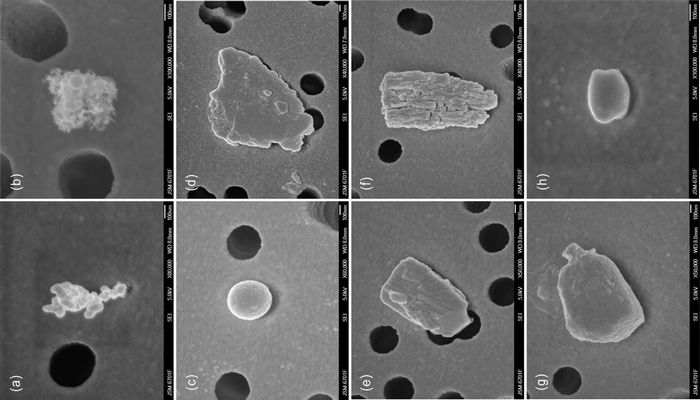Ion chemistry and individual particle analysis of atmospheric aerosols over Mt. Bogda of eastern Tianshan Mountains,Central Asia
Updatetime:2011-08-15From:
【Enlarge】【Reduce】
Aerosol particles are ubiquitous in the atmosphere and exert an important influence on global climate and the environment. They affect the Earth’s radiation budget, and hence climate,directly through the scattering, and absorption of light and indirectly by acting as cloud condensation nuclei.To understand the inorganic ion chemistry properties of the aerosols,determine the elemental compositions and morphological properties of individual aerosol particles, identify their sources of origin, and evaluate the influence of the anthropogenic pollutions on the atmosphere over Mt. Bogda,an intensive sampling experiment for aerosol was conducted during the scientific expedition to Mt. Bogda on the eastern Tianshan .
Aerosol samples were collected during the scientific expedition to Mt. Bogda in July–August, 2009. The major inorganic ions (Na+,NH4+ , K+, Mg2+,Ca2+, Cl−, SO42- , and NO3- ) of the aerosols were determined by ion chromatography.SO42- , NO3- , and Ca2+ were the dominate ions, with the mean concentrations of 0.86, 0.56, and 0.28 μg m−3, respectively. These mean ion concentrations were generally comparable with the background conditions in remote site of Xinjiang, while much lower than those in Ürümqi. Morphology and elemental compositions of 1,500 particles were determined by field emission scanning electron microscopy equipped with an energy dispersive X-ray spectrometer.Based on the morphology and elemental compositions,particles were classed into four major groups: soot (15.1%), fly ash (4.7%), mineral particles (78.9%), and little other matters (0.8% Fe-rich particles and 0.5% unrecognized particles).Presence of soot and fly ash particles indicated the influence of anthropogenic pollutions, while abundance mineral particles suggested that natural processes were the primary source of aerosols over this region, coinciding with the ionic analysis.Backward air mass trajectory analysis suggested that Ürümqi may contribute some anthropogenic pollution to this region, while the arid and semiarid regions of Central Asia were the primary source.
This research was supported by the National Basic Research Program of China (no. 2010CB951003), Knowledge Innovation Programs of the Chinese Academy of Sciences (no. KZCX2-YW-127),and the National Natural Science Foundation of China (no. 40631001, 40571033, 40701034, 40371028, J0630966,40701035).

Figure FESEM images of typical aerosol particles: a chain-like soot aggregates;b soot aggregates (cluster);c spherical fly ash;d alumosilicate; e SiO2;f calcium sulfate;g CaCO3; h Fe-rich particles
Appendix




